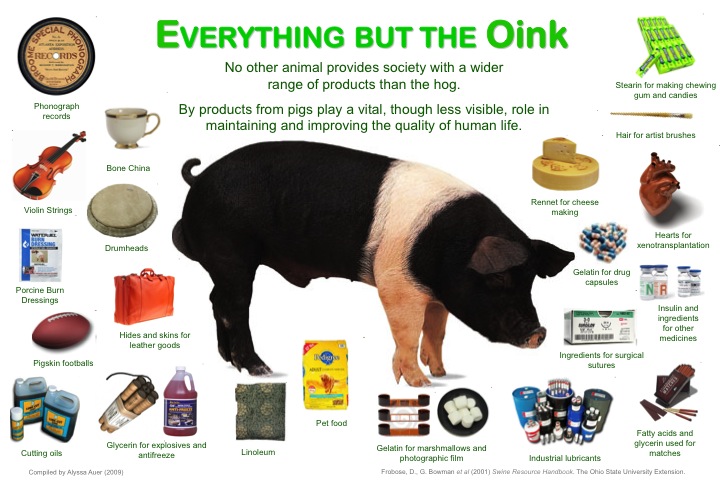A Cow in My Marshmallow? And Other Ways to Avoid Waste
Hey waiter, there’s a cow in my marshmallow!
Sounds crazy? It’s not.
The gelatin used as a thickening agent in certain marshmallows, puddings and ice creams is made from animal products – the bones, skin and cartilage of pigs and cattle.
When you ponder the purpose of livestock like pigs, cattle and chickens you most likely conjure up images of steak on the grill, bacon on a BLT or buffalo wings. But there are hundreds of uses for animals raised for food that go beyond your plate, providing important products – including medicines – and avoiding unnecessary waste.
Cattle
Did you know cattle by-products are used in adhesives, tires on your vehicles and asphalt on the roads? Cattle organs and glands are used in the production of insulation and antifreeze. Inedible beef fat is used in airplane lubricants and hydraulic brake fluid. There may even be fatty acids from cattle or other animals added to your toilet paper to make it soft.
Learn more here.
Pigs
You might not think of pigs as medicine, but they play a vital role in our health. Hog heart valves are used to replace damaged or diseased human heart valves. Skin from pigs is used to treat severe burn victims. Pigs are a source of nearly 20 drugs and pharmaceuticals including melatonin, cortisone and progesterone. Pig pituitary glands are used to make life-saving insulin. On the food front, pig skin is used to make pork rinds. And snouts? Well, you can eat those, too. (You first!)
Learn more here.
Poultry
From poultry, like chicken, come feathers and down (the layer of soft feathers found under the tough exterior feathers). If you’ve ever slept on a goose down pillow you know how comfy they are. Feathers are used in a number of ways, from ornaments and costumes to earrings and fishing flies. Keratin in feathers can be used to produce things like diapers, paper, plastics and feather meal – a source of protein for farm animals.
Particularly in Asian countries, chicken heads and feet are used to make stock for soups and stews. Considered a delicacy, chicken feet may be served as a snack, entrée or side dish. Chicken feet salad, anyone? While you won’t find that on my dinner table anytime soon, I’m thankful others enjoy parts of an animal that might otherwise go to waste. Pets benefit, too. Chicken organs like the liver and kidneys are an excellent source of protein and healthy fats and can be used as ingredients in pet food.
Learn more here.
The long list above barely scratches the surface but illustrates an often untold part of agriculture’s sustainability success story.
As a veterinarian, I have a deep respect for all that animals provide – whether that’s food, fuel or feather pillows. And as concern about global food waste increases, I’m heartened to know that almost everything from a food animal is put to good use and doesn’t end up in a landfill.
I’m proud to be connected to an industry that’s making the most of the gifts given to it.
Have questions? I’d love to connect with you! Reach out at @AskDrDorman or by email at AskDrDorman@pahc.com.

